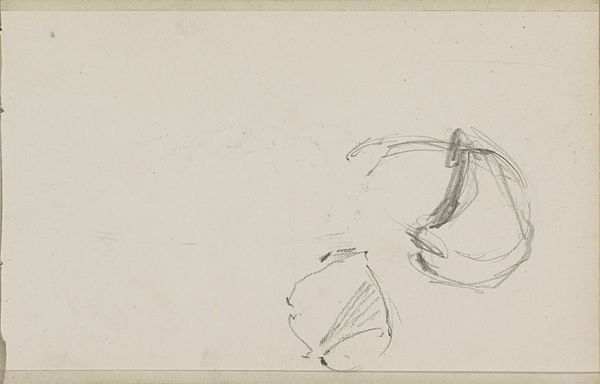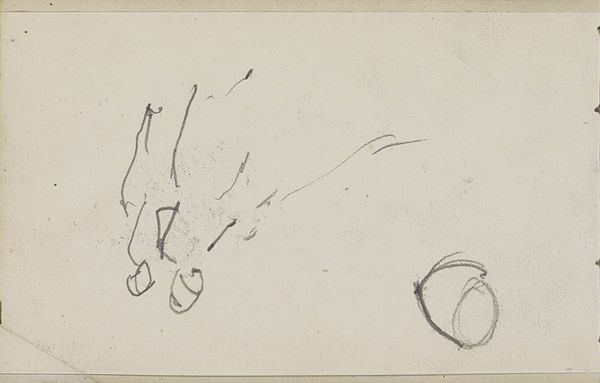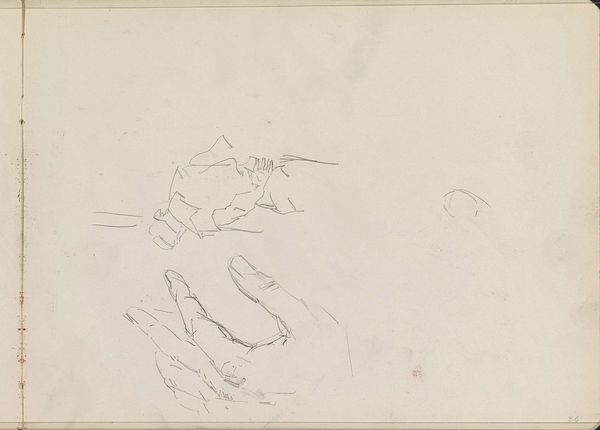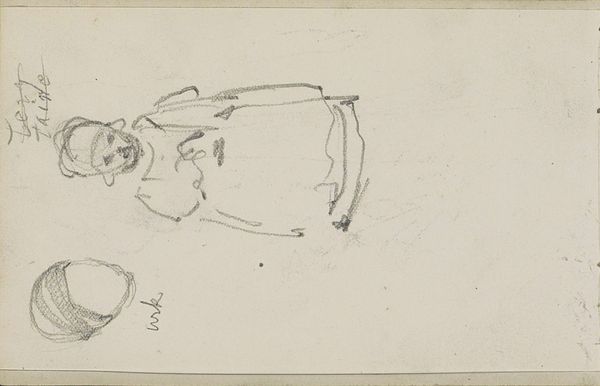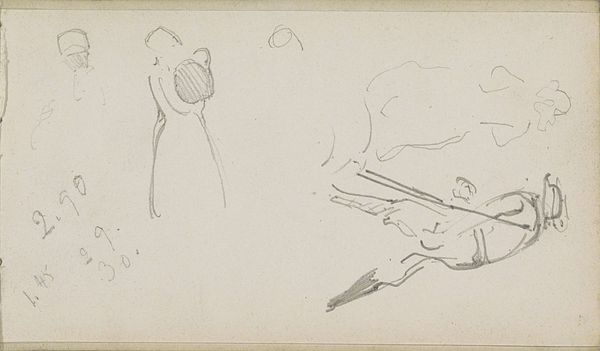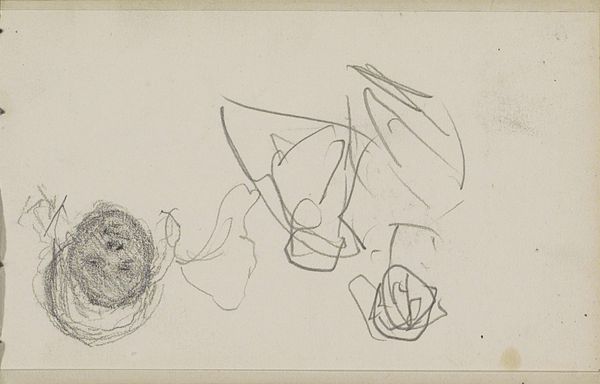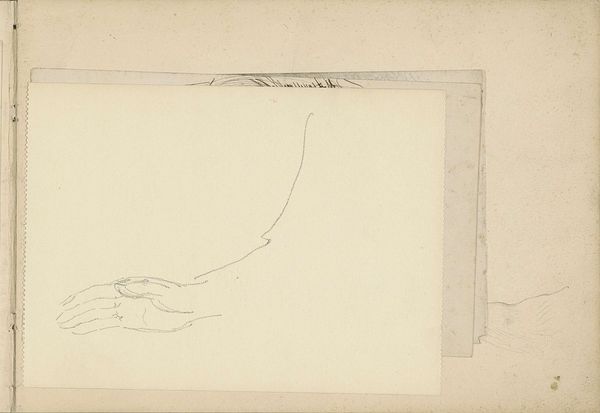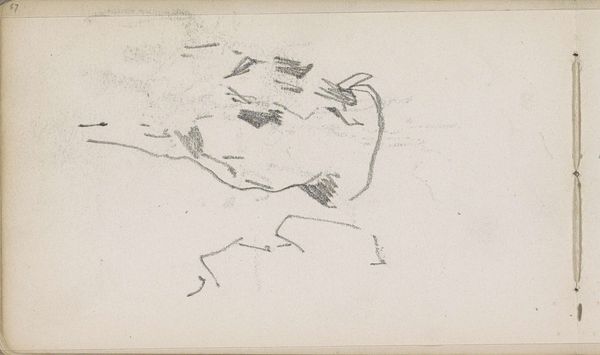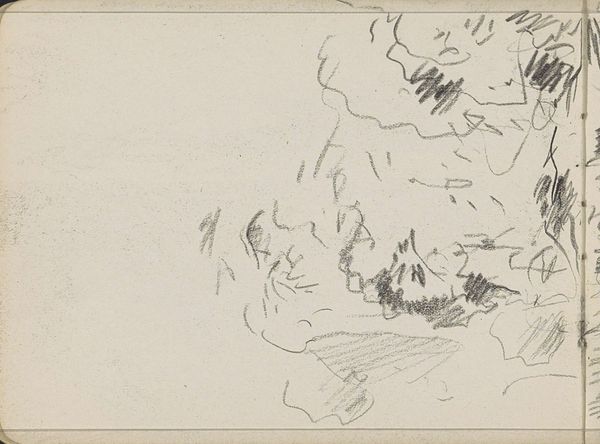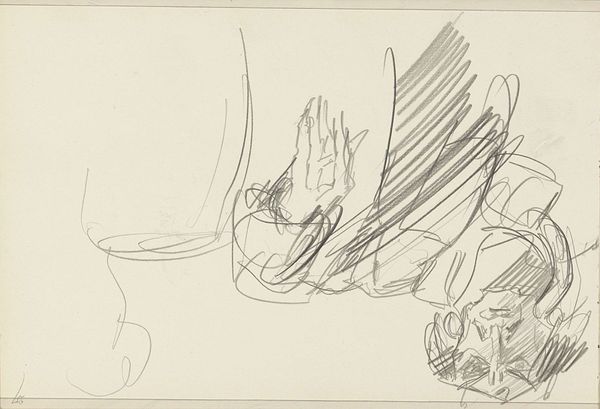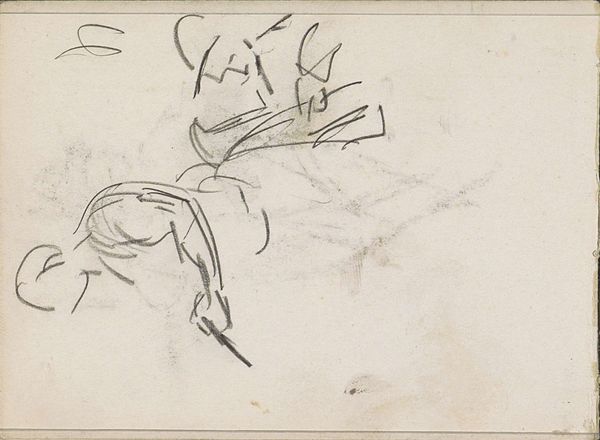
drawing, paper, pencil
#
portrait
#
drawing
#
paper
#
pencil
#
realism
Copyright: Rijks Museum: Open Domain
Editor: This drawing, "Twee Koppen," which translates to "Two Heads," was created in 1875 by George Clausen, using pencil on paper. The quick strokes and lack of detail make the artwork feel spontaneous, almost like a fleeting glimpse. How does Clausen’s work reflect the broader social context of portraiture at the time? Curator: That's an interesting starting point. While seemingly informal, it reflects a shift in how the rising middle class sought representation. No longer solely the domain of the aristocracy, portraiture expanded, and sketches like these became part of the artistic process, and at times, exhibited works in their own right. They democratize the idea of 'portrait'. Do you notice any tension between the realism and the sketch-like qualities? Editor: Absolutely. There's a tension between trying to capture a likeness and the freedom of the medium, a push and pull between representation and abstraction. What impact do you think exhibiting sketches like these had on public perception of art and the artist's process? Curator: It revealed the artist’s hand and the labor behind the final work. Prior to the Impressionist movement, the artist wanted to present their craft as masterful and concealing effort, while, drawings began challenging traditional academic notions of finish, allowing viewers a peek behind the curtain. Does knowing it comes from a larger sketchbook context alter how you understand it? Editor: Definitely. It reframes it as part of an ongoing practice, rather than a standalone statement, which humanizes the work and the artist. It is very intimate and personal. Curator: Precisely. And this shift also parallels broader societal changes – increased literacy, expanding public education – impacting who was both making and consuming art. Editor: So, these "Two Heads" aren’t just portraits, but a reflection of evolving social structures and the changing role of the artist? Curator: Exactly. It encapsulates the democratizing influences impacting art production, exhibition and appreciation during that era.
Comments
No comments
Be the first to comment and join the conversation on the ultimate creative platform.
